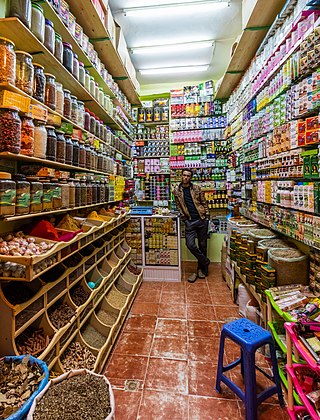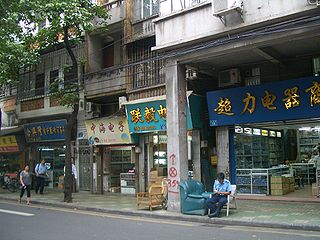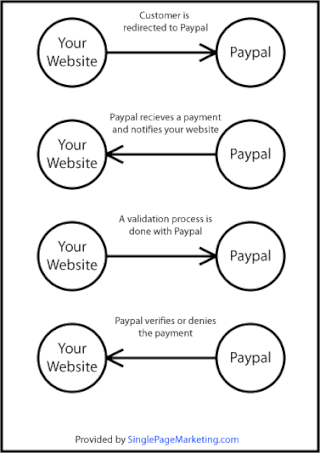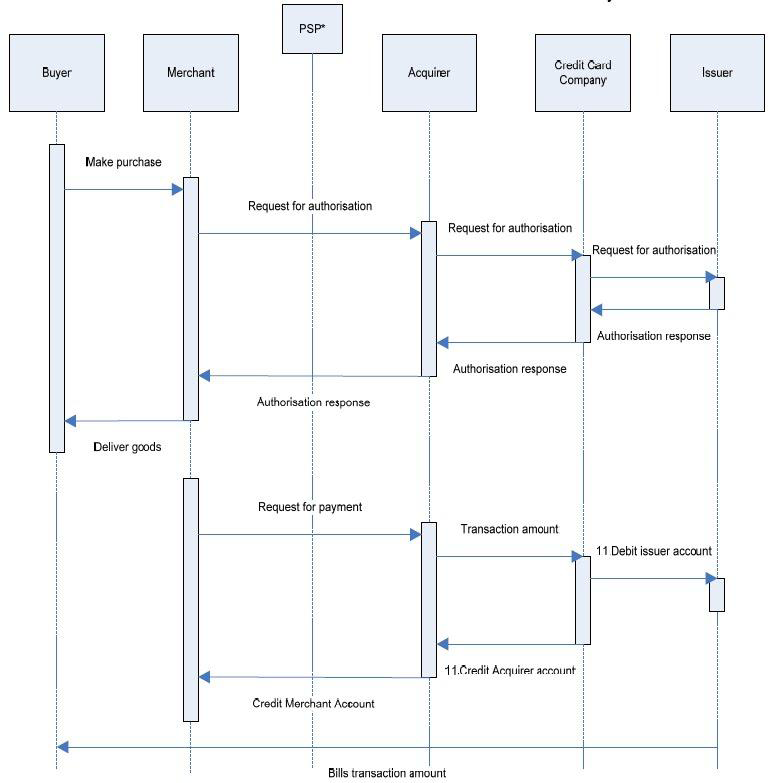E-commerce is the activity of electronically buying or selling products on online services or over the Internet. E-commerce draws on technologies such as mobile commerce, electronic funds transfer, supply chain management, Internet marketing, online transaction processing, electronic data interchange (EDI), inventory management systems, and automated data collection systems. E-commerce is the largest sector of the electronics industry and is in turn driven by the technological advances of the semiconductor industry.

Retail is the sale of goods and services to consumers, in contrast to wholesaling, which is sale to business or institutional customers. A retailer purchases goods in large quantities from manufacturers, directly or through a wholesaler, and then sells in smaller quantities to consumers for a profit. Retailers are the final link in the supply chain from producers to consumers.
Electronic business is any kind of business or commercial transaction that includes sharing information across the internet. Commerce constitutes the exchange of products and services between businesses, groups, and individuals and can be seen as one of the essential activities of any business.

Disintermediation is the removal of intermediaries in economics from a supply chain, or "cutting out the middlemen" in connection with a transaction or a series of transactions. Instead of going through traditional distribution channels, which had some type of intermediary, companies may now deal with customers directly, for example via the Internet.

A sales tax is a tax paid to a governing body for the sales of certain goods and services. Usually laws allow the seller to collect funds for the tax from the consumer at the point of purchase.

An online auction is an auction held over the internet and accessed by internet connected devices. Similar to in-person auctions, online auctions come in a variety of types, with different bidding and selling rules.

Online shopping is a form of electronic commerce which allows consumers to directly buy goods or services from a seller over the Internet using a web browser or a mobile app. Consumers find a product of interest by visiting the website of the retailer directly or by searching among alternative vendors using a shopping search engine, which displays the same product's availability and pricing at different e-retailers. As of 2020, customers can shop online using a range of different computers and devices, including desktop computers, laptops, tablet computers and smartphones.
Drop shipping is a form of retail business in which the seller accepts customer orders without keeping stock on hand. Instead, in a form of supply chain management, the seller transfers the orders and their shipment details either to the manufacturer, a wholesaler, another retailer, or a fulfillment house, which then ships the goods directly to the customer.
An e-commerce payment system facilitates the acceptance of electronic payment for offline transfer, also known as a subcomponent of electronic data interchange (EDI), e-commerce payment systems have become increasingly popular due to the widespread use of the internet-based shopping and banking.

Business-to-business is a situation where one business makes a commercial transaction with another. This typically occurs when:

Instant payment notification (IPN) is a method for online retailers to automatically track purchases and other server-to-server communication in real time. This allows E-commerce systems the opportunity to store payment transactions, order information and other sales internally. IPN messages can represent payment success or failures, order transaction status changes, accounting ledger information and many others depending on the payment gateway.
The term mobile commerce was originally coined in 1997 by Kevin Duffey at the launch of the Global Mobile Commerce Forum, to mean "the delivery of electronic commerce capabilities directly into the consumer’s hand, anywhere, via wireless technology." Many choose to think of Mobile Commerce as meaning "a retail outlet in your customer’s pocket."
Shopping cart software is a piece of e-commerce software on a web server that allows visitors to have an Internet site to select items for eventual purchase.
An online marketplace is a type of e-commerce website where product or service information is provided by multiple third parties. Online marketplaces are the primary type of multichannel ecommerce and can be a way to streamline the production process.
Business-to-employee (B2E) electronic commerce uses an intrabusiness network which allows companies to provide products and/or services to their employees. Typically, companies use B2E networks to automate employee-related corporate processes. B2E portals have to be compelling to the people who use them. Companies are competing for eyeballs of their employees with eBay, yahoo and thousands of other web sites. There is a huge percentage of traffic to consumer web sites comes from people who are connecting to the net at the office.
Customer to customer markets provide a way to allow customers to interact with each other. Traditional markets require business to customer relationships, in which a customer goes to the business in order to purchase a product or service. In customer to customer markets, the business facilitates an environment where customers can sell goods or services to each other. Other types of markets include business to business (B2B) and business to customer (B2C).
E-commerce or electric commerce in Southeast Asia is the buying and selling of products and services over the internet in the countries of Southeast Asia. These practices reached Southeast Asia during the dot-com mania in the 1990s. After the dot-com bust, local e-companies have seen promising growth in this sector.
There are many types of e-commerce models', based on market segmentation, that can be used to conducted business online. The 6 types of business models that can be used in e-commerce include: Business-to-Consumer (B2C), Consumer-to-Business (C2B), Business-to-Business (B2B), Consumer-to-Consumer (C2C), Business-to-Administration (B2A), and Consumer-to-Administration
Pakistan's e-trading mainly involves buying and selling goods, and services using internet or telephone, through the use of electronic means such as computer, fax machine, cellular phone, automated teller machines (ATMs), and other electronic appliances with or without using the internet. Online banking, e-tickets, share trading in stock exchange are few examples of e-commerce of modern advancement. With its potential, e-trading can reduce the cost per transaction, increase efficiency, support contest, lower prices and boost international demand. It can open new areas for business in the service sector like online education, medical services, consultancy, and data exchange. It can also provide expansion in trade through domestic and international market research, advertising and marketing. In the financial services area, it can make easy and speedy transactions and transfer of money at a minimum risk. The interesting feature of online trading is that an investor simply sitting in his office or home can buy or sell through the Internet via mobile/tablet or PC and before being an experienced trader he may learn a lot by watching market screens or web portals at his convenience.
Shift4Shop is a technology company that develops e-commerce software for businesses. The company was founded in 1997 with headquarters in Tamarac, FL. Shift4Shop develops electronic commerce application for online stores and retail point-of-sale systems.







